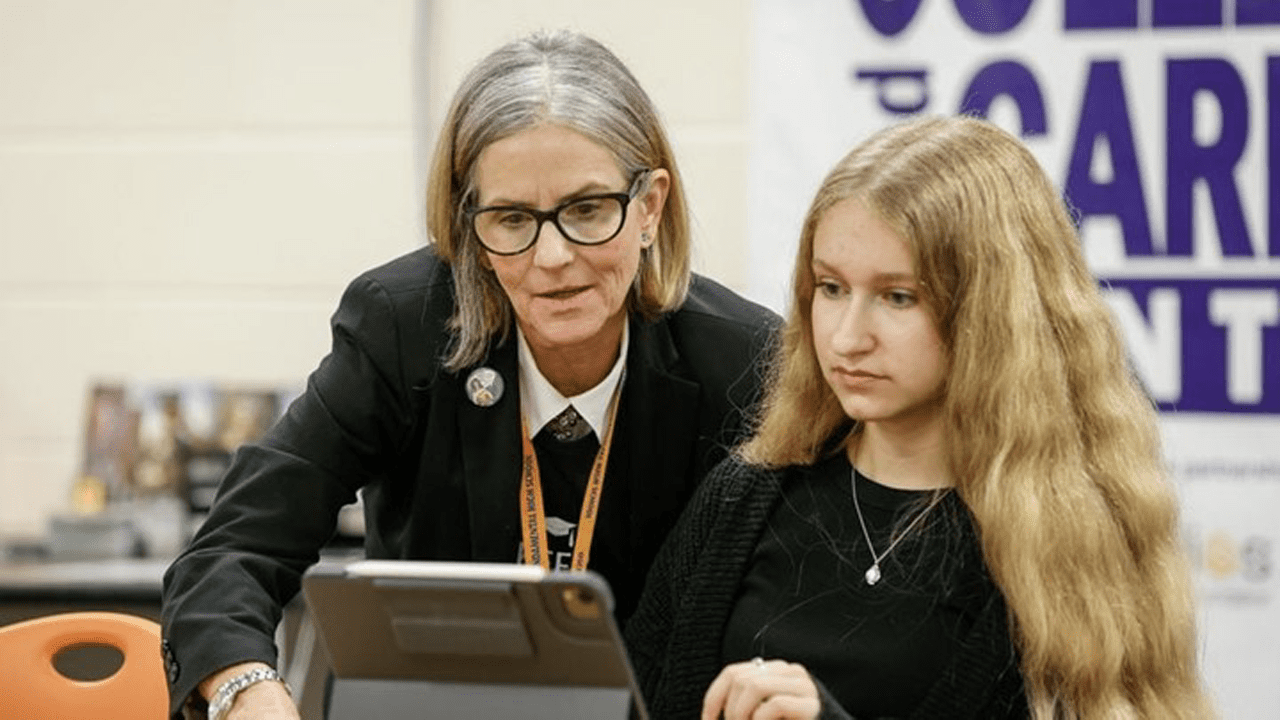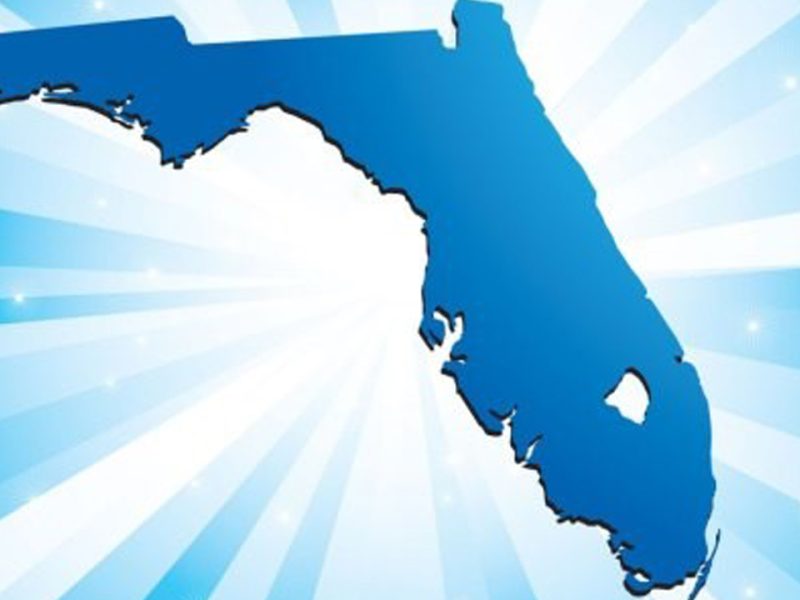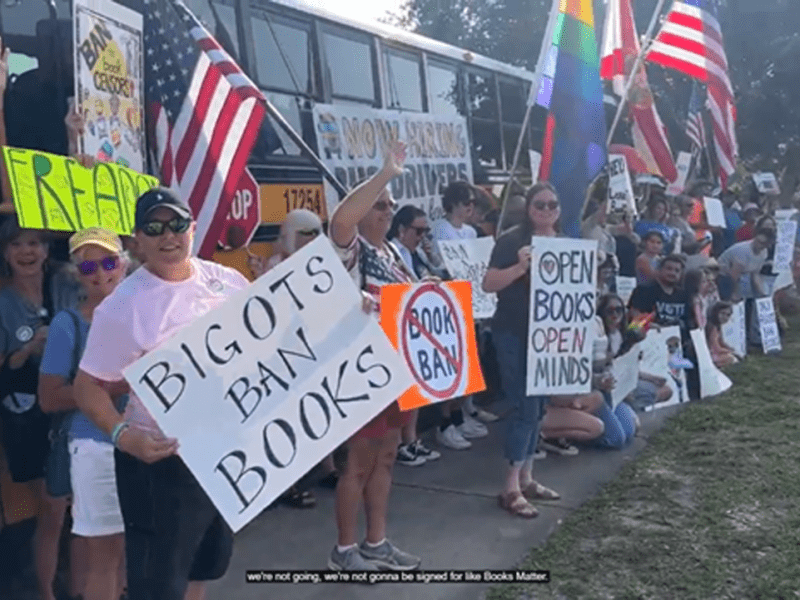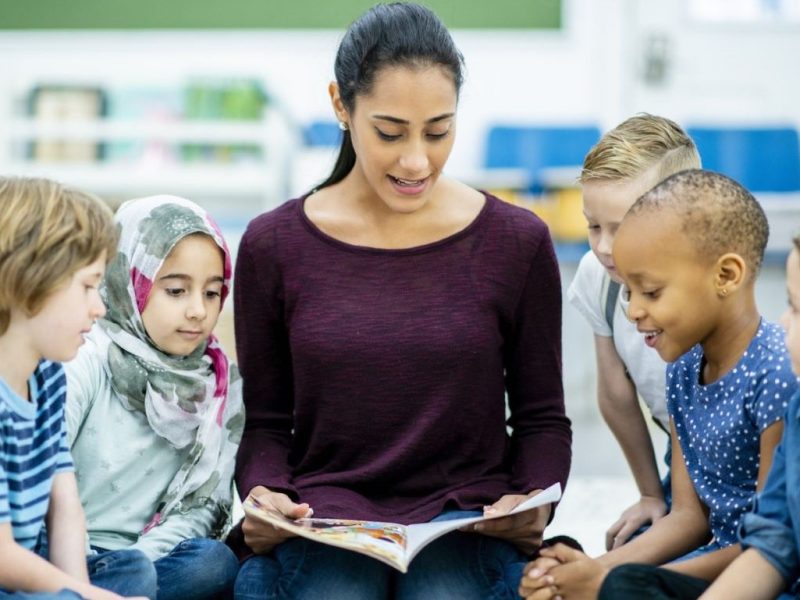
Pinellas put a college and career center in every high school. It’s working.
The program has students thinking ahead, with more of them filling out their federal student aid forms.
Tampa Bay Times | By Ian Hodgson | December 14, 2023
By junior year of high school, Qwynn Foster had fled or been kicked out of three homes.
Foster, who uses they/them pronouns, recalls getting in trouble as a child for dancing like a girl or wearing “gay clothes.” When Foster came out as gay in seventh grade, arguments with family members gave way to fights, they said. One after another, their mother, grandmother and aunt slammed the door.
Foster wound up at a youth shelter.
Gibbs High School in St. Petersburg became a safe haven, somewhere they “couldn’t get kicked out,” Foster said. But as graduation and their 18th birthday approached in 2020, they faced two choices: find a full ride to a university or spend another year transitional housing.
College would be an escape but Foster had no idea where to start.
With nothing to lose, they asked for help and found it at — among other places — the college and career center at Gibbs High. The then-new program was dedicated to helping students prepare for life after graduation, and Gibbs at the time was one of just five Pinellas County public schools to pilot the centers.
Since then, the district has expanded the program to all 17 traditional public schools in the county, and numbers indicate the model is making a difference.

At Gibbs, Foster started visiting almost every day, said Sarah Alvarez, then the school’s counselor in the college and career center. Some days, they would come in buzzing over an application essay. On others, Foster’s confidence would fade and they’d arrive at Alvarez’s door in tears.
“You’ve got this, Qwynn,” she’d say. “You can do it.”
Alvarez, now a college and career counselor at Northeast High in St. Petersburg, said Foster was unique in the way they sought help. But most students could use a nudge to get across the finish line.
“If you make things just a little easier,”she said, “it makes a huge difference.”
A bright spot in Florida
A vital early step in planning for college is figuring out how to pay for it. Whether the money comes from a federal Pell grant for low-income students or a scholarship awarded by a college or university, students need to fill out the Free Application for Federal Student Aid.
The number of students completing the form also serves as an indicator of how many are interested in higher education.
When Pinellas rolled out the first wave of college and career centers in 2019, four of the five participating schools saw an increase in completion rates. Meanwhile, rates at most of the district’s remaining dozen high schools fell.
Completion rates at Gibbs — typically one of the worst-performing schools in terms of completion — went up 7.4 percentage points from the year before, with nearly 53% of seniors completing the form.
On average, completion rates increased by 2.4 percentage points at the pilot schools in the program’s first year.
When the program expanded to four more schools in 2021, completion rates rose at each one, for an average increase of 6 percentage points. It happened again last year, when the final seven schools rolled out their centers. Each school’s rate rose, for an average increase of 7 percentage points.
Last year, 58% of Pinellas’ 7,000 public high school seniors completed the federal aid application — the 10th-highest rate in the state. That jump, up from 49% the year before, earned the district the distinction of “most improved” by the Florida College Access Network, a nonprofit that tracks completion rates.
College and career coordinators have a sole focus on getting kids ready for life after high school, and that’s what makes the program work, said Valerie Santos, who manages the district’s counseling department.
When it comes to completing their federal student aid form, “the amount of follow-up you need to do is insane,” Santos said. “That follow-up was the hardest part for school counselors. … Our numbers are up because we have a dedicated person and a dedicated place 100% of the time.”
It’s one of the few bright spots in a state where less than half of seniors completed the aid application last year, according to the National College Access Network. That’s nearly 10 percentage points below the national average and among the worst completion rates in the nation.
Other Tampa Bay area school districts have experimented with the college and career center model. In 2018, Robinson High in Hillsborough County opened its own college and career center with funding from LEAP Tampa Bay, a college access nonprofit.
Alvarez, who worked at Robinson until 2019, said the center showed promise, but officials never expanded the program to other schools. Last year, 52% ofHillsboroughseniors completed the federal financial aid application, placing the county 27th out of the state’s 67 school districts. Pasco came in 47th with 47%, according to federal data collected by Florida College Access Network.
Florida students left roughly $3 million in federal student aid on the table last year by failing to submit their application form, according to LEAP Tampa Bay, a nonprofit that promotes college access. Federal Pell grants, worth up to $7,395 per year, can make a critical difference between going to college or not.
Breaking the ice
On a recent Friday, the cost of college loomed large for eight students gathered at Osceola Fundamental High School’s college and career center.
It’s a small classroom tucked in the maze of hallways, but the plaid-wrapped door pinned with dollar signs is hard to miss. It bears a reminder in capital letters: “FREE APPLICATION FOR FEDERAL STUDENT AID OPENS BY DECEMBER 31.″
Inside, a handful of anxious seniors sat hunched over laptops creating a federal student aid ID. It’s an important first step to completing the application but also a chance for Julia Long, the center’s career counselor, to break the ice with students who otherwise might not seek help.
Osceola senior Mackenzie Dunn dreams of attending the Culinary Institute of America. The private school nestled in New York’s Hudson Valley has produced household names like Anthony Bourdain. It also costs more than $35,000 per year, including living expenses — more than triple what she’d pay for the University of Central Florida’s highly rated culinary program.
Since the pandemic, cost-of-living increases have made it harder to get by. She knows it’s become more difficult for her parents to save. Bringing up college applications at home only makes her more stressed, she said.
“We opened up the applications and my mom goes, ‘Oh my God, everything is so different,’” Dunn said. They left the application half-completed.
“I don’t think I would have finished all the steps I needed without Mrs. Long,” Dunn said.
Long circulated the room wearing a black blazer and a T-shirt with the words: “Keep Calm and Do Your FAFSA,” a reference to the commonly used abbreviation for the federal aid form.

She is quick to explain that she’s not a traditional school counselor. She has no formal training and started as a parent volunteer at Boca Ciega High when the centers were being piloted. The room’s informal atmosphere might be its biggest strength, Long said. “It makes (students) feel like they aren’t being judged.”
Ten to 15 students stop by the center on an average day, with questions ranging from how to apply for Florida’s Bright Futures scholarship to vague anxieties over “what’s next?” as they enter the adult world. Long said she knew the program was working when students started showing up on their own time, between classes or during lunch.
After completing a questionnaire, Benjamin Watters decided that he wanted to do “something in business.” The University of South Florida seemed like a good option, but he and his mother, who works as a home care aid, were quickly overwhelmed by the application process.
Long helped break it down into manageable pieces, Watters said, and directed him toward scholarships for first-generation college students like him.
Paige Williams came to the center even though she already had her college plan mapped out: The University of Florida’s entomology program is among the best in the nation, she said. Williams has a Bright Futures scholarship and a Florida Prepaid plan. Both parents work as engineers, so she’s unlikely to receive much federal student aid.
“But …” Long cut in, “you’re still going to complete a FAFSA, right?”
A letter arrives
Halfway through their junior year at Gibbs High, Qwynn Foster hit a low point.
It was 2021 and they were living in transitional housing during a pandemic. Foster felt isolated, depressed. Their grades were slipping and the dream of college started drifting away.
Foster figured going out of state was off the table. Maybe they’d spend a few years at St. Petersburg College and then reapply.
Then, what felt like the impossible happened. An email appeared in Foster’s inbox on the bus ride home from school. They scanned the letter and stopped on the word “accepted.”
Had they read that right? Foster’s eyes flooded. It was hard to make out through the adrenaline and tears.
They steadied themselves, heart pounding, and read the words again and again. Then Foster typed out a one-line email to Alvarez, their counselor.
“I GOT INTO VANDERBILT.”
Foster entered the university’s honors program and joined the debate team. They’re experimenting with poetry and thinking about getting involved in politics.
They recently moved into their own apartment in Nashville, Tennessee, a step that felt unachievable two years ago. This summer, Foster reached out to their mother for the first time in years — and, on Thanksgiving, helped her prepare dinner for the family.
Ian Hodgson is an education data reporter for the Tampa Bay Times, working in partnership with Open Campus.





